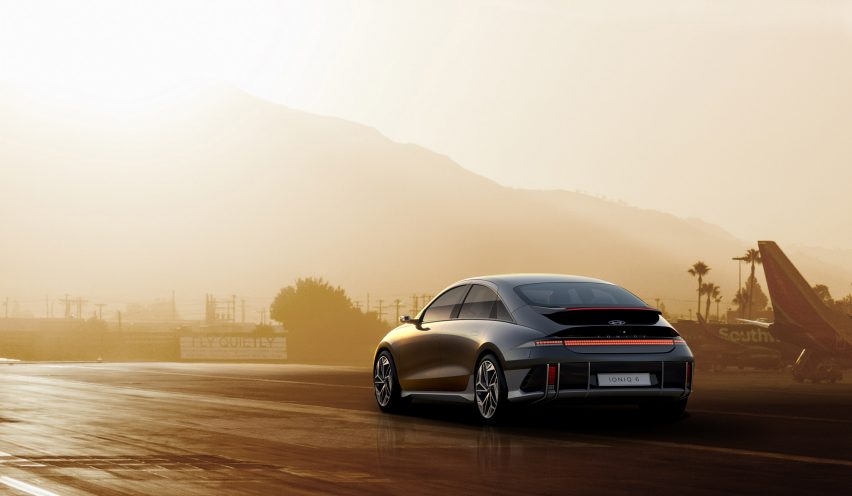Circularity is “closer than we think” says Hyundai design boss
Mass-market cars built to circular design principles could only be a generation of automobiles away, says Hyundai vice president Simon Loasby.
Loasby, vice president at Hyundai Motor Company and head of its styling group at the carmaker’s design centre in South Korea, said his team is pushing “really strongly” towards eliminating the waste and pollution caused by producing its vehicles.
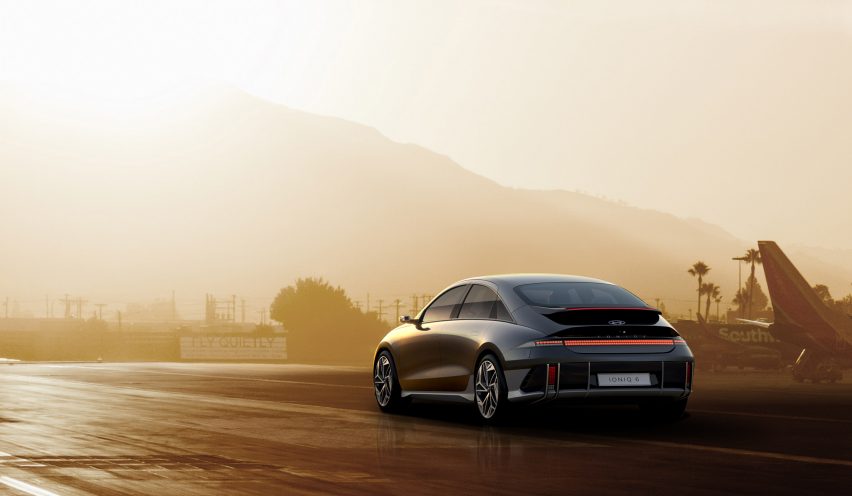
He was speaking to Dezeen as Hyundai unveiled its new Ioniq 6 electric car to journalists at a launch event in London.
“In every aspect we’re pushing it [circularity] really strongly, though I wouldn’t say we’re the most successful yet,” said Loasby.
“We just need to get the visibility, the understanding”
“Circularity is where we have to be, that’s the vision where we have to get to,” he added. “I’d say design is often the most advanced in thinking in the organisation to some extent, and so that for us is like the Holy Grail.”
Asked how far off a mass-market Hyundai car built to circular economy principles is, he replied: “Honestly, I believe it’s closer than we think. We’re so quick when we get our mindset right, when we get everybody in the same direction.”
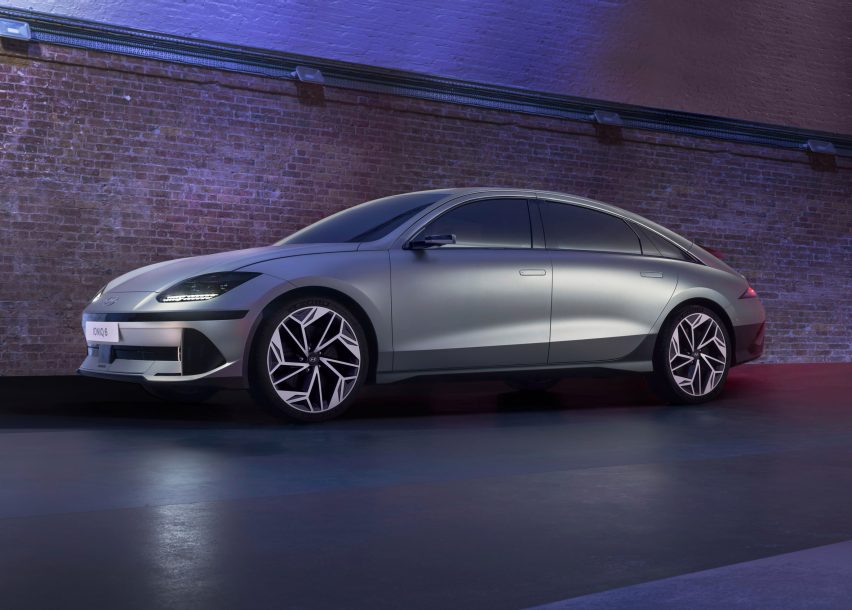
“It could be a generation [of cars] away rather than three or four generations away,” he continued. “We just need to get the visibility, the understanding of it.”
He said he is trying to convince Hyundai’s seat suppliers to reuse old metal seat frames rather than make new ones.
Hyundai is also working on reusing plastic pieces of car parts that are currently removed and discarded during the assembly process, Loasby added.
“We try to sow the seed at every bit in the organisation,” he explained. “We need to get the whole company on that wavelength – the product managers, the engineers, the purchasing guys, the suppliers.”
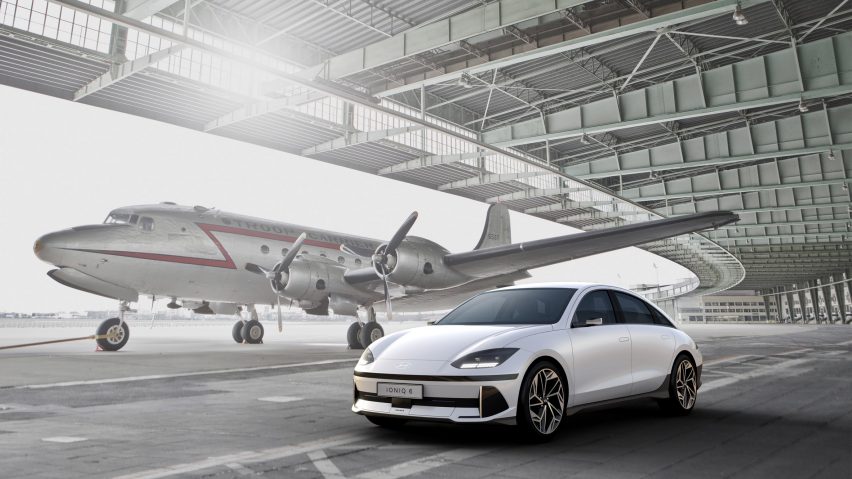
“In everything we do we can find those examples to get everybody thinking,” Loasby continued. “Once we get that critical mass in the organisation – and we’re getting there – then all of a sudden it’s boom, and then it’s one car away.”
Embodied carbon associated with material production currently accounts for around a fifth of a car’s lifecycle emissions.
“It’ll cost us a little bit more”
At the COP26 global climate conference in November, German auto manufacturer BMW unveiled a concept car designed to be easily disassembled at the end of its life in line with circular principles, using detachable connections in the place of permanent adhesives.
Electric carmaker Polestar is aiming to produce a climate-neutral car by 2030.
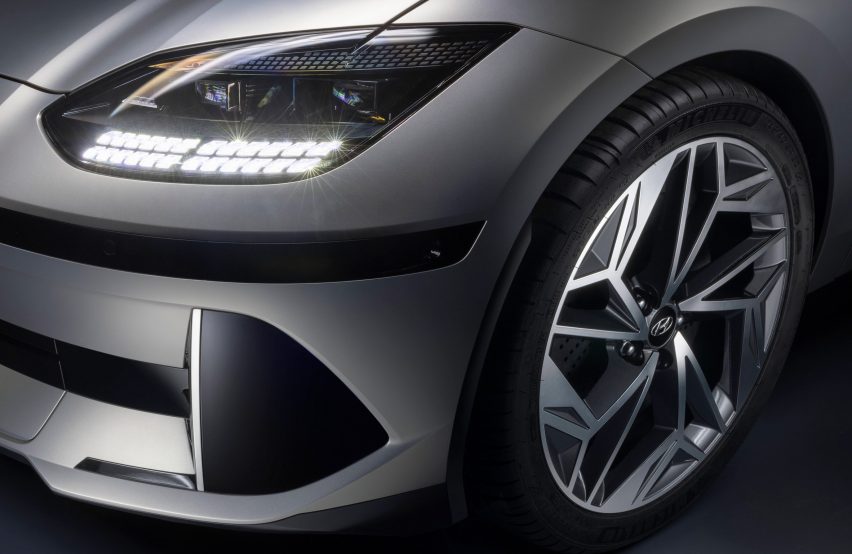
Cars incorporating circularity will initially come with an extra cost to consumers, Loasby admitted, but he believes people will be prepared to pay more for models that are better for the planet.
“People are already prepared to pay a bit more for electric cars, but they’ll come down in price. It’ll be the same with circularity, it’ll cost us a little bit more,” he said.
“It’ll become the norm, it will get over a tipping point and everyone will do it so no longer will there be an extra cost,” he continued. “The early adopters will buy into it earlier, whichever generation that is, and they’ll do it because it makes that statement.”
The Ioniq 6 is the second in Hyundai’s Ioniq brand of electric vehicles, following the hatchback Ioniq 5.
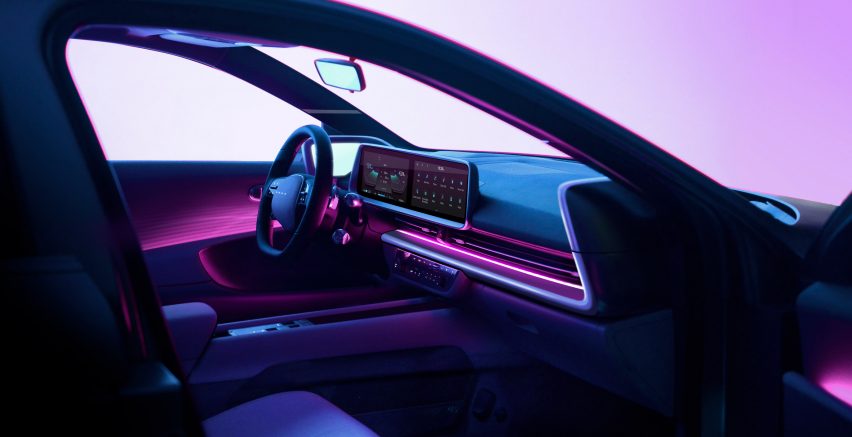
Hyundai has said that sustainability is a key part of the Ioniq brand, and the latest model uses some recycled or less energy-intensive materials.
For example, the seas are covered in recycled PET fabric and the carpet is made from recycled fishing nets, while the leather is dyed using a process that reduces the need for chemicals by using flaxseed oil.
“A very nice cocoon that hugs you”
The polyurethane paint on the inside of the doors was derived from vegetable oils, with the black paint around the base of the car’s exterior pigmented using recycled tire rubber.
Aesthetically, the Ioniq 6 is based on Hyundai’s Prophecy concept car with a streamlined shape and an extra-long wheel-base influenced by 1930s sports cars like the Phantom Corsair.
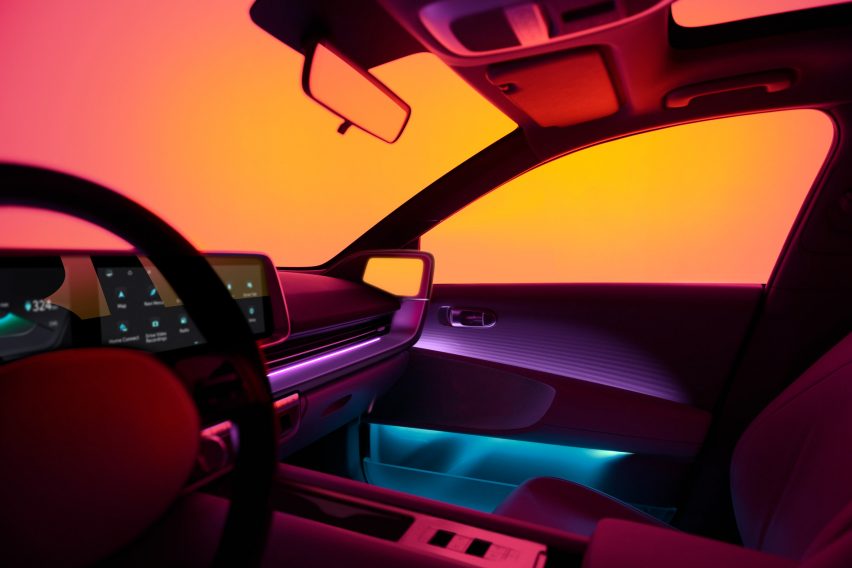
Like the Prophecy concept and the Ioniq 5, it uses distinctive pixel LED headlights and rear lights.
The Ioniq 6’s interior, which Hyundai calls a “mindful cocoon”, has mood lighting that changes according to driving speed with translucent materials used to enhance the effect.
“You’re going to feel like you’re surrounded by a very nice cocoon that hugs you,” said head of Hyundai’s Global Design Centre SangYup Lee of the experience of sitting in the car during a talk at the launch event.
In a recent interview with Dezeen, Lee shared his belief that cars will increasingly become “more of a living space rather than a driving space”.

